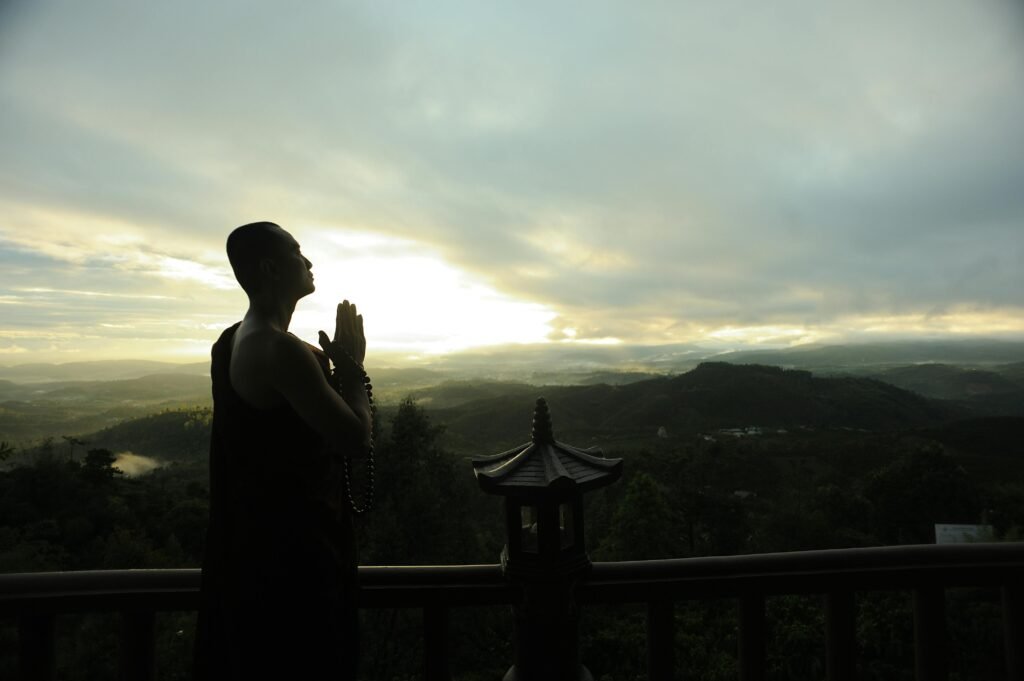There are few places on Earth that grip the soul quite like Varanasi. Older than history itself, older than tradition, “older even than legend,” as Mark Twain famously remarked, Kashi (as it was once known) is a city steeped in antiquity, spirituality, and a profound sense of the eternal. Nestled on the western bank of the sacred River Ganga in Uttar Pradesh, Varanasi is not just a city; it’s a living, breathing testament to India’s enduring spiritual legacy, a place where the veil between the mundane and the divine seems impossibly thin.
For millennia, pilgrims, philosophers, and seekers have flocked to Varanasi, believing that to die here, and to have one’s ashes scattered in the Ganga, grants moksha – liberation from the cycle of rebirth. This belief forms the very bedrock of the city’s unique rhythms, which revolve around its famed ghats – a series of stone steps leading down to the river. There are nearly 100 ghats, each with its own history, purpose, and community, forming the pulsing arteries of Varanasi’s spiritual heart.
Walking along the ghats at dawn is an unforgettable experience. As the first rays of the sun kiss the ancient stone, the scene awakens. Pilgrims take holy dips in the Ganga, their prayers echoing in the crisp morning air. Priests perform rituals, yoga practitioners find their quiet spots, and boatmen prepare their vessels for rides that offer a panoramic view of the bustling riverside. Dashashwamedh Ghat, Assi Ghat, and Manikarnika Ghat are among the most prominent, each offering a distinct facet of the city’s spiritual tapestry.
Perhaps the most mesmerizing spectacle in Varanasi is the Ganga Aarti, a mesmerizing fire ritual performed every evening at Dashashwamedh Ghat. As dusk descends, saffron-clad pandits (priests) stand on elevated platforms, performing synchronized movements with multi-tiered lamps, conch shells, and incense. The rhythmic chanting, the fervent prayers, the scent of sandalwood, and the sight of hundreds of lamps floating on the river create an atmosphere of intense devotion and sublime beauty that transcends religious boundaries. It’s an immersive cultural experience that speaks volumes about the depth of Hindu spirituality.
Varanasi’s relationship with life and death is uniquely open and profound. At ghats like Manikarnika and Harishchandra, one encounters the cremation rituals that are central to the city’s identity. Here, funeral pyres burn continuously, a poignant reminder of the impermanence of life and the continuity of the soul. While it might seem confronting to some, it is observed with an immense sense of dignity and purpose, reflecting the deep philosophical understanding of death in Hinduism. Witnessing these rituals offers a rare glimpse into the heart of a faith that views death not as an end, but as a sacred transition.
Beyond the grandeur of the ghats, Varanasi’s charm lies in its intricate narrow lanes (galis). These labyrinthine alleys, barely wide enough for one person, are a microcosm of Indian life. They are packed with ancient temples dedicated to various deities (most notably the Kashi Vishwanath Temple), vibrant street food stalls, artisan workshops, and bustling markets. Every turn reveals a new sight, sound, or smell, from the aroma of freshly made lassi to the distant sound of temple bells. This is where you encounter the city’s vibrant local life, where history literally paves the way.
Amidst the spiritual fervor, one often sees sadhus – Hindu ascetics who have renounced worldly life in pursuit of spiritual enlightenment. With their matted hair, ash-smeared bodies, and serene expressions, they are an integral part of Varanasi’s landscape, embodying centuries of ascetic tradition and offering a glimpse into a life dedicated to the spiritual quest.
Varanasi is more than just a destination; it’s an experience that awakens the senses and challenges perceptions. It is a city where ancient rituals continue uninterrupted, where devotion flows as freely as the sacred Ganga, and where the echoes of a timeless civilization resonate in every stone. To explore Varanasi is to delve deep into the spiritual heartbeat of India, a journey that promises to be as profound as it is unforgettable.

